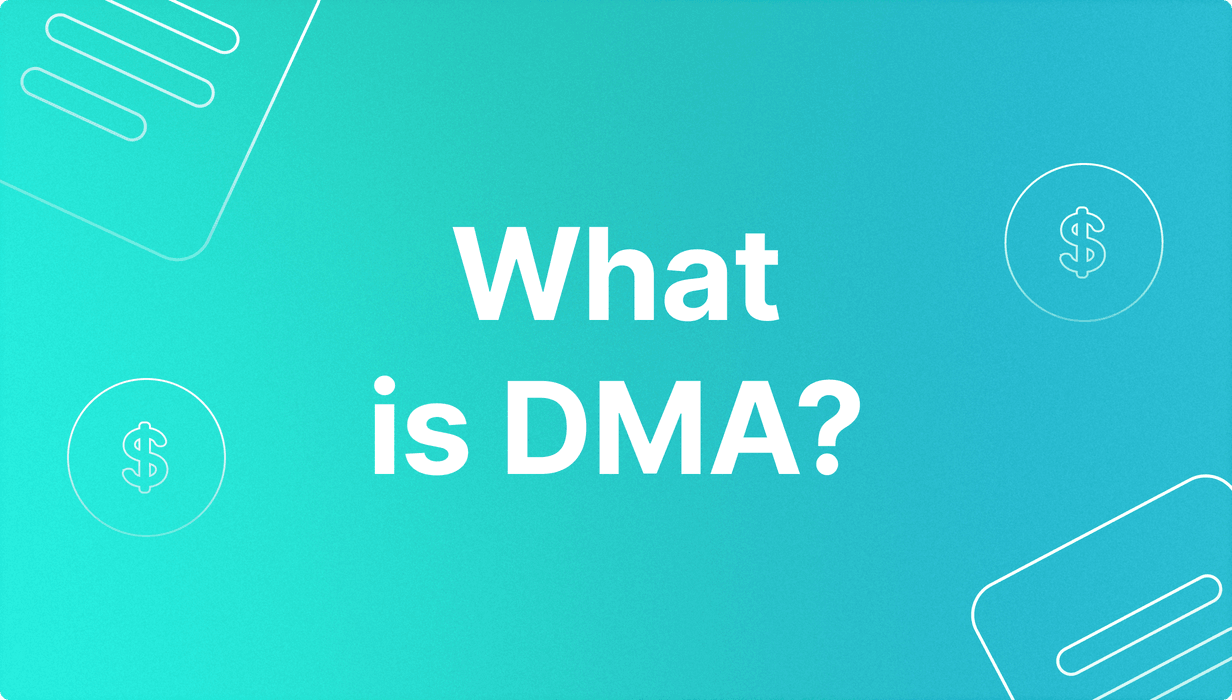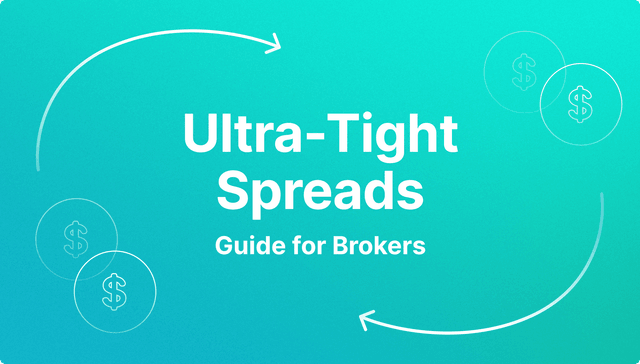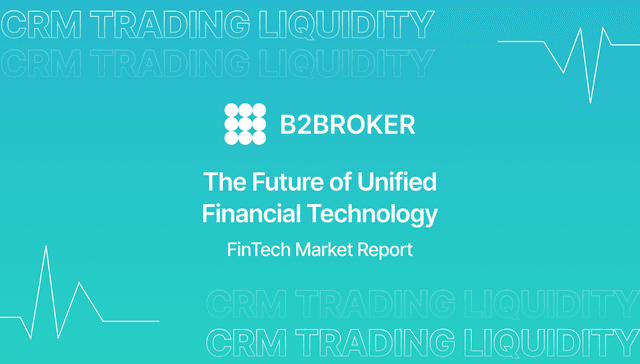What is DMA (Direct Market Access) Trading?

The allure of interacting directly with exchange order books, bypassing traditional intermediaries, is strong for many serious market participants. DMA technology provides precisely this capability. For corporate treasuries, hedge funds, and high-frequency trading (HFT) operations prioritising execution speed, market transparency, and granular control, DMA often represents the preferred trading pathway.
Instead of routing instructions through a broker's system for handling, those using DMA employ advanced platforms creating direct electronic pathways into the core matching engines and liquidity sources of exchanges and alternative venues. This setup is designed for quicker order submission, richer data feeds, and enhanced command over trade placement specifics.
In this article, you will find answers to questions about what DMA technology is, what key features it has, and how it works within different types of capital markets.
Key Takeaways
DMA trading provides direct access to exchange order books, bypassing broker-dealer execution.
It's widely used in equities, Forex, futures, and derivatives for speed and control.
DMA platforms support special order types, low-latency execution, and algo integration.
What Does DMA Stand For?
DMA(Direct Market Access) represents an electronic trading architecture that empowers investors, particularly institutions and trading professionals, to channel their orders straight into the live order streams of financial exchanges, moving past traditional broker-managed interfaces.
Instead of relying on intermediaries for execution handling, DMA participants interface more immediately with the market's foundational systems, frequently deploying specialised trading software linked directly to exchange communication networks.
DMA was initially designed for institutional traders, but technological advances have opened the door for high-volume retail traders to access it if they meet certain criteria.
Key Features of DMA Technology
DMA sets itself apart from typical trading routes through an array of advanced functionalities. The engineering focus behind these features centres on delivering superior speed, precise execution, and comprehensive control over the trading workflow, establishing DMA as a preferred pathway for institutional and proficient high-volume traders.
Explore Deeper Industry Insights
Learn from experts shaping the future of financial services — get the latest strategies and trends.
Here are the most common features DMA technology has:
Direct Order Placement to the Exchange
A core characteristic of DMA involves bypassing traditional broker interventions, allowing traders to dispatch orders directly to the central ledger of an exchange or another liquidity destination. This unmediated routing minimises potential processing lags, clarifies accountability, and can lessen the chance of orders executing at prices different from those initially observed (slippage). Consequently, users achieve more immediate market interaction and can potentially secure faster, accurately priced fills.
Access to Level 2 Market Data (Market Depth)
DMA systems typically unlock a deeper view of market activity compared to platforms showing only the best current bid and ask. This Level 2 data grants real-time insight into the order book's layers, revealing buy and sell interest across multiple price tiers and the volume associated with each. Possessing such granular information equips traders to better interpret underlying market sentiment, evaluate available liquidity pools, and place or manage significant orders with greater strategic precision.
Specific Order Types
Beyond standard market and limit instructions, DMA environments usually support a wider repertoire of order types. Traders gain access to specialised commands, such as those intended to manage an order's visibility in the book (like iceberg instructions), enforce specific execution conditions (e.g., immediate-or-cancel, fill-or-kill), or define an order's lifespan (e.g., good-till-cancelled). Such versatility allows for nuanced execution tactics adapted to particular market scenarios or trading goals.
Fast and Low-Latency Execution
Exceptional speed is a hallmark of DMA. Leveraging direct connections to trading venues, often via high-speed fiber optics, DMA platforms work to drastically cut down signal transmission times, aiming for near-instantaneous order acknowledgement and execution. This minimised delay, or low latency, is indispensable for quantitative strategies like high-frequency trading, arbitrage, and scalping, which seek to capture fleeting price discrepancies measurable in tiny fractions of a second.
Greater Control Over Trade Execution
A DMA trader achieves significant authority over the execution specifics: determining the timing, pricing parameters, routing choices, and even how their orders interact with available liquidity (e.g., acting passively or aggressively). This degree of personalised management is often essential when handling large or intricate trades to minimise unwanted effects on prevailing market prices.
Anonymous Trading
Many DMA systems offer anonymity, particularly when trading through dark pools or specific ECNs. Preserving confidentiality regarding trading intentions is often paramount for institutions handling substantial positions. Masking order identity and size helps mitigate the risk of others trading ahead of large orders (front-running) and dampens the potential market disruption caused by revealing significant trading interest.
Access to Multiple Markets and Venues
DMA platforms typically establish connections across a spectrum of trading destinations, including traditional exchanges. This broad connectivity allows traders to survey pricing across different venues and intelligently route orders towards locations offering the most favourable terms, narrowest spreads, or deepest available volume.
Integration with Algorithmic Trading
The infrastructure provided by DMA serves as a common foundation upon which automated trading strategies are built. Traders can deploy programmed instructions based on established logic, like Volume Weighted Average Price (VWAP) or Time Weighted Average Price (TWAP), or utilise entirely custom algorithms. The real-time connectivity inherent in DMA is what allows these automated systems to operate effectively, reacting dynamically to live market data and conditions as they unfold.

Risk Management and Pre-Trade Controls
Before any order reaches the market, DMA systems enforce pre-trade risk controls. These include checks for margin availability, position limits, and order size constraints. These measures are vital for regulatory compliance and protection against excessive risk exposure for brokers and clients.
Real-Time Execution Feedback and Reporting
DMA platforms contain sophisticated reporting instruments, including instant order status updates, trade confirmations, and execution summaries. Post-trade analytics help traders evaluate performance, refine strategies, and maintain compliance with internal and external reporting requirements.

DMA Trading Arrangement Technology in Different Markets
DMA technology operates on the same principle across equity markets — providing direct connectivity to exchanges — its applications, advantages, and tools differ based on the asset class. Here's a closer look at how DMA functions in equities, Forex, futures, and derivatives markets.
DMA in the Equities Market
Equity markets were early adopters of DMA technology, giving traders direct admission to exchanges like the NYSE, NASDAQ, LSE, and Euronext. By bypassing broker-dealer layers, traders can interact with the exchange order books in real-time.
DMA in equities is particularly useful for institutional investors executing block trades, as it reduces market impact and enhances execution quality. It's also heavily used in algorithmic strategies like VWAP and TWAP and is fundamental for high-frequency trading due to its speed and transparency.
Key benefits include full order book visibility (Level 2 data), improved pricing, and reduced slippage. Tools like smart order routing (SOR) and support for complex order types, such as iceberg and pegged orders, make equity DMA platforms highly efficient and customisable.
DMA in the Forex Market
The forex market is decentralised, but DMA enables access to deep liquidity pools and non-dealing desk (NDD) execution models. This is crucial for institutional and professional traders seeking transparency and tight spreads.
DMA in forex directly links to real bid/ask quotes from liquidity providers, which minimises spreads and improves pricing. This model is favoured in volatile conditions where execution speed is essential. Platforms like MetaTrader 5, cTrader, and FIX API terminals are commonly used to implement DMA in FX environments.
Deep, Reliable Liquidity Across 10 Major Asset Classes
FX, Crypto, Commodities, Indices & More from One Single Margin Account
Tight Spreads and Ultra-Low Latency Execution
Seamless API Integration with Your Trading Platform

Nonetheless, since there's no centralised exchange in forex, DMA lacks a unified order book. Access to top-tier liquidity typically requires a prime broker or institutional account, limiting retail participation.
DMA in the Futures Market
DMA is widely used in futures trading, especially on electronic venues such as CME Group, Eurex, and ICE. Futures traders leverage DMA for direct order routing, real-time market info, and precise execution of time-sensitive strategies.
It supports trading across various products, including commodities, stock index futures, and interest rate derivatives. Futures DMA platforms are designed for low-latency execution — essential for arbitrage and scalping — and integrate advanced risk management options, including margin controls and pre-trade checks.
Notable features include support for specific order types like stop-limit and bracket orders, and direct integration with exchange APIs and real-time clearing systems.
DMA in Derivatives and Options
Options and other derivatives require more sophisticated DMA systems due to the complexity of the instruments and the need for multi-leg trade execution in this space; DMA is paramount for institutions that run strategies based on volatility, hedging, and arbitrage between options and futures.
Traders benefit from access to real-time volatility surfaces, options Greeks, and precise control over custom strategies like straddles, strangles, and spreads. These platforms offer advanced analytics and real-time risk monitoring, helping traders adjust positions instantly as market conditions shift.
Even so, trading derivatives via DMA demands technical expertise, high-performance systems, and the ability to manage varying liquidity conditions across different strikes and expirations. Capital requirements are also typically higher due to the risk profile.

Conclusion
DMA trading is more than just a tech upgrade — it's a paradigm shift in how serious traders engage with the markets. DMA empowers traders to act on real-time data without relying on secondary sources by promoting accountability, speed, and control.
Gaining a better understanding of DMA is fundamental for improving your performance in Forex, futures, and equity trading. Smarter strategies, more accurate execution, and better results are all possible with the correct DMA broker and platform.
Interested in Partnering or Collaborating?
Over the past 10+ years, we’ve partnered with industry leaders to build solutions that set the standard in fintech. Now, we invite you to join us.
FAQ
- Is DMA trading only for bigwigs?
Not necessarily. While DMA was built for institutions, high-volume or professional retail traders can access it through certain DMA brokers.
- How is DMA different from regular trading?
DMA bypasses broker-dealer execution, giving participants direct connections to market order books, faster execution, and better control.
- Can I use DMA for Forex trading?
Yes! Many DMA Forex brokers offer access to deep liquidity pools, providing upfront and efficient FX execution.
- Do I need special software to trade via DMA?
DMA trading usually requires professional-grade platforms with exchange connectivity — like FIX API terminals, MT5, or cTrader.
Recent news
Our team will present the solution, demonstrate demo-cases, and provide a commercial offer





